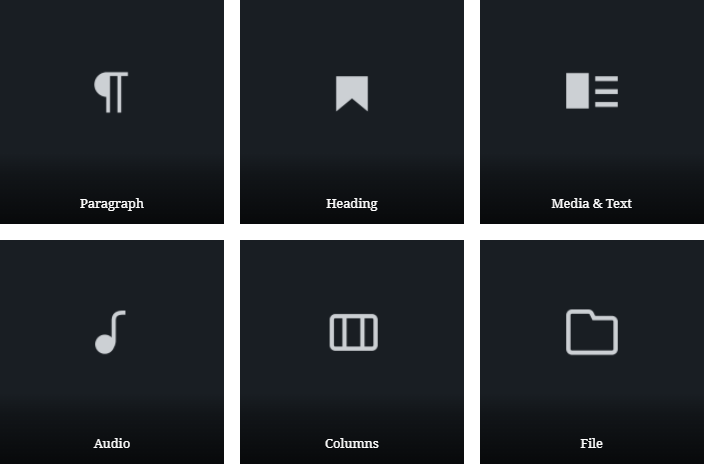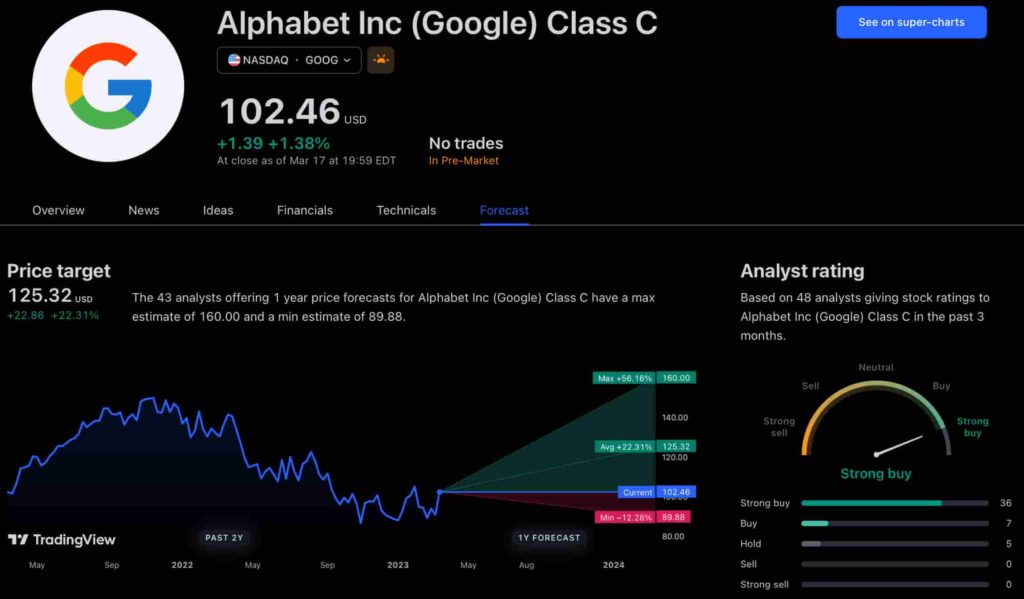The new app is called watchGPT and as I tipped off already, it gives you access to ChatGPT from your Apple Watch. Now the $10,000 question (or more accurately the $3.99 question, as that is the one-time cost of the app) is why having ChatGPT on your wrist is remotely necessary, so let’s dive into what exactly the app can do.
NEWS
WordPress Gutenberg 10.1 Boosts Core Web Vitals

Gutenberg 10.1 is Released
WordPress announced the release of Gutenberg 10.1 and buried in all the little details of new features was an improvement that publishers have been waiting for.
Google is soon updating their algorithm to give a small ranking boost to sites that have a passing Core Web Vitals score.
Core Web Vitals are a set of metrics that collectively describe whether a web page delivers a good or bad user experience when they visit the web page.
There is no in between score. A site can either pass or fail the Core Web Vitals test.
Web publishers have found it increasingly difficult to achieve a passing Core Web Vitals score because many of the issues that need solving are inherent to the content management system (like WordPress) and the themes and plugins that are used.
The official WordPress announcement about the newest version of Gutenberg (10.1) included many improvements but buried deep inside the announcement, in a section labeled Experiments, was this vaguely worded snippet:
“Experiments
Improve loading method for block styles.”
Not particularly descriptive. But those six words described an important update to how the WordPress Gutenberg site editor delivers style sheets on the front end, where it affects site visitors.
What is Gutenberg?
Gutenberg is a new way of building websites that aims to simplify the process of building websites. It’s kind of similar (but not exactly) to a “What You See is What You Get (WYSIWIG)” page builder interface.
The Gutenberg editor sets out to reimagine the website building process as one involving blocks of page elements.
For example, one block can be the header. The next block beneath the header can be the menu section. Beneath that block is the content block, followed by a footer block.
For the content area there are other blocks that can be used to create a huge variety of custom layouts. Gutenberg is a visual way of creating web pages by using pre-made layout pieces called blocks.
So if you need a contact form you can choose to drop in a contact form block. If you want to create columns within the content area you can choose a Columns block.
Screenshot of Gutenberg Content Blocks UI

The page builder interface is a popular way to create websites that will simplify the process. That way more publishers can create websites without having to worry about programming, freeing content publishers to focus more on the content and less on coding and plugins.
The Gutenberg Code Bloat that Was Fixed
Every Gutenberg block has style codes that are specific to each block. The style codes dictate how each block looks.
Previous to this update, sites created with Gutenberg loaded every style code for each block that can possibly be used, on every page of the website.
This meant that a giant file with code for every block was loaded on all pages, regardless if you used that block or not.
Excessive code can cause the page experience to degrade. The slower a page loads the worst the user experience becomes.
Slow loading web pages are frustrating and can cause a site to earn less.
Additionally, because on May 2021, fast web pages will have a slight advantage over slower web pages in the form of a ranking boost in Google, improving page speed performance is a big issue right now.
Gutenberg 10.1 Addresses Code Bloat
The latest version of Gutenberg fixes this problem. According to WordPress, the styling code for each block is relatively small. The solution they chose was to selectively load only the style code necessary for the blocks that are on a web page.
Even better, rather than create numerous style sheets that need to be downloaded for those pages, the necessary style codes are on the web page already.
This is called “inlining” the code and it’s a best practice for speeding up how fast a web page downloads.
WordPress described how they achieved this improvement:
“Since most blocks have fairly small stylesheets, it didn’t make sense to send requests to the server for these bite-sized styles.
To resolve this, the tiny stylesheets were inlined, further improving the performance by including everything the browser needs in a single request. Think of this as sending one text message covering a few topics, rather than writing a bunch of individual messages one after the other.”
Gutenberg 10.1 is a Speed Champ
The results of this small change are notable.
WordPress measure the before and after Core Web Vitals performance scores and the difference was overwhelmingly positive.
These are the Core Web Vitals score before the Gutenberg improvements:

This is a screenshot of the Core Web Vitals scores after improvements:

It’s very apparent that Gutenberg 10.1 represents a significant step forward for improving page speed performance.
The WordPress developers described their achievement like this:
“There is a significant performance boost, and that’s on a simple page with not too many blocks. On more complex structures the effect will be even more pronounced!”
WordPress is Paying Attention to Core Web Vitals
This change is going to be most welcome in the SEO and publishing community. While Gutenberg isn’t completely finished at the moment, it is still ready to be used if publishers choose to.
Most importantly, this update underlines how Gutenberg is not only the future of web publishing but a clear improvement in publishing.
A search of the WordPress.org site previously did not show acknowledgement of Google’s Core Web Vitals.
This announcement not only mentions the SEO challenges, it actually emphasizes how these kinds of improvements benefit site visitors and publishers.
“While a lot of work is put into democratizing publishing in the WordPress project, this kind of work helps democratize delivery, allowing people to get the content they want to consume easier and faster.
With changes coming to Google Search related to the speed of webpages, performance improvements for both the front end and in the editor have never been more timely.”
WordPress Core Web Vitals Boost is Real
While this change to how CSS is delivered can be said to be incremental, the benefit to publishers and users is huge. This update fixes one of the major code bloat issues affecting Gutenberg. With this problem resolved, Gutenberg becomes a more viable content management system.
Citations
Core Editor Improvement: Need for (page/post) Speed
What’s new in Gutenberg 10.1? (3 March)
Improve Loading Method For Block Styles
Facebook Faces Yet Another Outage: Platform Encounters Technical Issues Again

Uppdated: It seems that today’s issues with Facebook haven’t affected as many users as the last time. A smaller group of people appears to be impacted this time around, which is a relief compared to the larger incident before. Nevertheless, it’s still frustrating for those affected, and hopefully, the issues will be resolved soon by the Facebook team.
Facebook had another problem today (March 20, 2024). According to Downdetector, a website that shows when other websites are not working, many people had trouble using Facebook.
This isn’t the first time Facebook has had issues. Just a little while ago, there was another problem that stopped people from using the site. Today, when people tried to use Facebook, it didn’t work like it should. People couldn’t see their friends’ posts, and sometimes the website wouldn’t even load.
Downdetector, which watches out for problems on websites, showed that lots of people were having trouble with Facebook. People from all over the world said they couldn’t use the site, and they were not happy about it.
When websites like Facebook have problems, it affects a lot of people. It’s not just about not being able to see posts or chat with friends. It can also impact businesses that use Facebook to reach customers.
Since Facebook owns Messenger and Instagram, the problems with Facebook also meant that people had trouble using these apps. It made the situation even more frustrating for many users, who rely on these apps to stay connected with others.
During this recent problem, one thing is obvious: the internet is always changing, and even big websites like Facebook can have problems. While people wait for Facebook to fix the issue, it shows us how easily things online can go wrong. It’s a good reminder that we should have backup plans for staying connected online, just in case something like this happens again.
NEWS
We asked ChatGPT what will be Google (GOOG) stock price for 2030

Investors who have invested in Alphabet Inc. (NASDAQ: GOOG) stock have reaped significant benefits from the company’s robust financial performance over the last five years. Google’s dominance in the online advertising market has been a key driver of the company’s consistent revenue growth and impressive profit margins.
In addition, Google has expanded its operations into related fields such as cloud computing and artificial intelligence. These areas show great promise as future growth drivers, making them increasingly attractive to investors. Notably, Alphabet’s stock price has been rising due to investor interest in the company’s recent initiatives in the fast-developing field of artificial intelligence (AI), adding generative AI features to Gmail and Google Docs.
However, when it comes to predicting the future pricing of a corporation like Google, there are many factors to consider. With this in mind, Finbold turned to the artificial intelligence tool ChatGPT to suggest a likely pricing range for GOOG stock by 2030. Although the tool was unable to give a definitive price range, it did note the following:
“Over the long term, Google has a track record of strong financial performance and has shown an ability to adapt to changing market conditions. As such, it’s reasonable to expect that Google’s stock price may continue to appreciate over time.”
GOOG stock price prediction
While attempting to estimate the price range of future transactions, it is essential to consider a variety of measures in addition to the AI chat tool, which includes deep learning algorithms and stock market experts.
Finbold collected forecasts provided by CoinPriceForecast, a finance prediction tool that utilizes machine self-learning technology, to anticipate Google stock price by the end of 2030 to compare with ChatGPT’s projection.
According to the most recent long-term estimate, which Finbold obtained on March 20, the price of Google will rise beyond $200 in 2030 and touch $247 by the end of the year, which would indicate a 141% gain from today to the end of the year.
Google has been assigned a recommendation of ‘strong buy’ by the majority of analysts working on Wall Street for a more near-term time frame. Significantly, 36 analysts of the 48 have recommended a “strong buy,” while seven people have advocated a “buy.” The remaining five analysts had given a ‘hold’ rating.

The average price projection for Alphabet stock over the last three months has been $125.32; this objective represents a 22.31% upside from its current price. It’s interesting to note that the maximum price forecast for the next year is $160, representing a gain of 56.16% from the stock’s current price of $102.46.
While the outlook for Google stock may be positive, it’s important to keep in mind that some potential challenges and risks could impact its performance, including competition from ChatGPT itself, which could affect Google’s price.
Disclaimer: The content on this site should not be considered investment advice. Investing is speculative. When investing, your capital is at risk.
NEWS
This Apple Watch app brings ChatGPT to your wrist — here’s why you want it

ChatGPT feels like it is everywhere at the moment; the AI-powered tool is rapidly starting to feel like internet connected home devices where you are left wondering if your flower pot really needed Bluetooth. However, after hearing about a new Apple Watch app that brings ChatGPT to your favorite wrist computer, I’m actually convinced this one is worth checking out.
-

 PPC5 days ago
PPC5 days ago19 Best SEO Tools in 2024 (For Every Use Case)
-

 MARKETING7 days ago
MARKETING7 days agoStreamlining Processes for Increased Efficiency and Results
-
SEARCHENGINES6 days ago
Daily Search Forum Recap: April 17, 2024
-

 PPC7 days ago
PPC7 days ago97 Marvelous May Content Ideas for Blog Posts, Videos, & More
-

 SEO6 days ago
SEO6 days agoAn In-Depth Guide And Best Practices For Mobile SEO
-

 MARKETING6 days ago
MARKETING6 days agoEcommerce evolution: Blurring the lines between B2B and B2C
-
SEARCHENGINES5 days ago
Daily Search Forum Recap: April 18, 2024
-
SEARCHENGINES4 days ago
Daily Search Forum Recap: April 19, 2024




![Astra Theme Coupon 2024 (Apr) [40% Discount, Save $400] Astra Pricing Plans on discounts](https://articles.entireweb.com/wp-content/uploads/2024/04/1713797772_611_Astra-Theme-Coupon-2024-Apr-40-Discount-Save-400-400x240.png)
![Astra Theme Coupon 2024 (Apr) [40% Discount, Save $400] Astra Pricing Plans on discounts](https://articles.entireweb.com/wp-content/uploads/2024/04/1713797772_611_Astra-Theme-Coupon-2024-Apr-40-Discount-Save-400-80x80.png)
![Elementor Pro Discount (Apr 2024) [70% OFF, Save $150] Elementor Coupon](https://articles.entireweb.com/wp-content/uploads/2024/04/1713729377_Elementor-Pro-Discount-Apr-2024-70-OFF-Save-150-400x240.png)
![Elementor Pro Discount (Apr 2024) [70% OFF, Save $150] Elementor Coupon](https://articles.entireweb.com/wp-content/uploads/2024/04/1713729377_Elementor-Pro-Discount-Apr-2024-70-OFF-Save-150-80x80.png)







